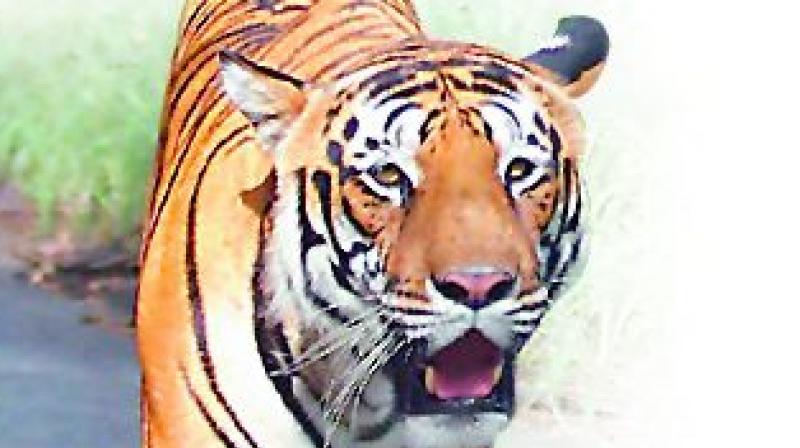India loses 625 tigers in 19 years

Visakhapatnam: TRAFFIC, the wildlife trade specialist, noticed the need for bilateral support to curb the trading of the tiger across nations. After analysing the seizure of tigers, it has recommended several suggestions that include establishing a standardised and a systematic database containing forensic markers and photographic information of both wild and captive tigers. The recommendations read, “Bilateral sharing of photographic and genetic data from countries of seizure to countries holding national databases would strengthen enforcement efforts and cross-border cooperation.”
All the recommendations were made taking the analysis of tiger seizures in the past 19 years. About 2,359 tigers was seized from 2000 to 2018 globally. All these were recorded from a total of 1,142 seizure incidents. India has recorded 463 seizures incidents, which are 40.5 per cent of the total seizures worldwide. India was followed by China with 126 seizures, which is 11 per cent and then by Indonesia with 119 seizures, nearly 10.5 per cent of the total seizures.
India can indeed be considered as the home for tigers, as it contains 56 per cent of the global population. Thus the poaching activities are also high. Analysis showed that India had lost 625 tigers to poaching after analysing the 463 seizure incidents. With 369 tigers seized, Thailand stands second and Indonesia third with 266 tigers lost to poaching activity.
India has the highest number of seizures globally in tiger skin, bones, claws and teeth, while it is placed in the third position in carcass seizure. However, there are no live animal seizures in India. Of the total tigers seized globally, India has a share of 42 per cent in the seizure of tiger claws and teeth, 38 per cent in skin seizures and 28 per cent in bone seizures. Howev-er, in carcass seizures, India has a contribution of 13 per cent, while Thailand and Vietnam have 27 and 24 per cent share respectively.

